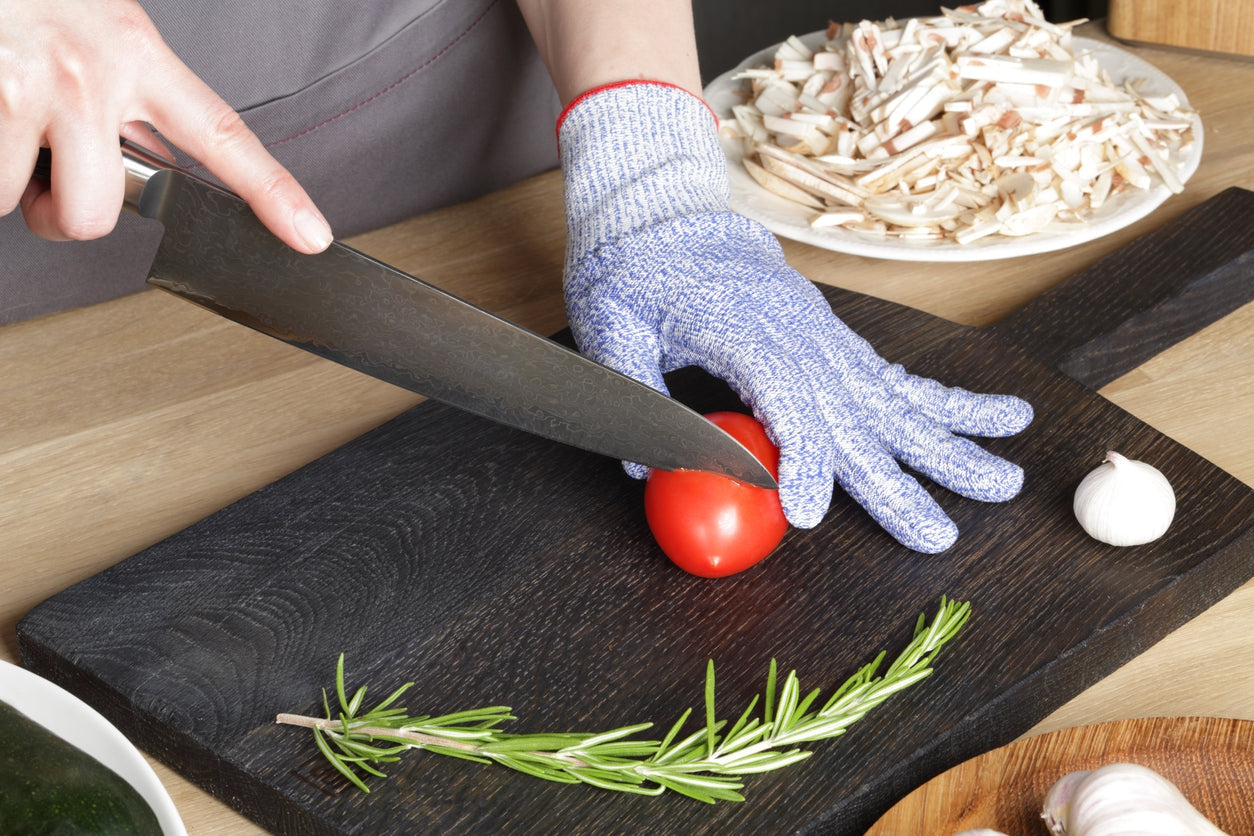Cut-resistance gloves are an essential safety measure for chefs as they protect against potential cuts and injuries in the kitchen. The importance of these gloves can't be underestimated, as sharp knives and other equipment likely to cause accidents are frequently used in the food preparation process.
This piece covers the significance of cut-resistance gloves for chefs and other individuals working in kitchens and highlights why they should be a mandatory safety requirement in all commercial kitchens.
Why Are Cut-Resistance Gloves Needed?
Chefs are constantly exposed to sharp tools, such as knives, mandolins, graters, and slicers, that pose a risk of cuts and other injuries. While these tools are necessary for food preparation, they require high skill and precision to use safely. Accidents, some of which may be fatal, can happen quickly, and even the most experienced chefs are susceptible to injury.
Cuts are a common type of injury in commercial kitchens, and sometimes they can be severe enough to require medical attention. A cut can easily occur when working with meat or chopping fruits and vegetables. The resulting injury could be a superficial wound or deep enough to damage nerves and arteries. In some cases, cuts can be life-threatening, especially in delicate body parts.
The Risks of Kitchen Injuries
In addition to the physical pain and discomfort, cuts can also impact a chef's ability to work. A cut on the hand or fingers, for example, can make it difficult to grip utensils or handle food, leading to delays and reducing kitchen efficiency. Furthermore, cuts can be costly for restaurants, as they may result in lost productivity, medical expenses, and potential legal liabilities.
Moreover, cuts can also pose a risk of infection, especially in a commercial kitchen where foodborne pathogens are prevalent. The bacteria present in food can quickly infect an open wound, leading to serious health complications. It can be perilous for chefs who handle raw meat or poultry, as these foods are more likely to contain harmful bacteria such as Salmonella and E. coli.
The Importance of Cut-Resistance Gloves
Cut-resistance gloves are designed to protect chefs' hands from sharp objects, reducing the risk of injuries in the kitchen. These gloves are made of a strong and durable material designed to resist cuts, offering additional protection against the sharp edges of kitchen equipment like knives.
Cut-resistant gloves are available in different levels of protection, ranging from low to high, depending on the type of materials used. The higher the level of protection, the more resistant the glove is to cuts meaning the user is well protected from injury. Chefs should select the appropriate level of protection depending on the type of equipment they are working with and the kind of kitchen work to be done.
Cut-resistant gloves have various benefits for chefs, including increased safety, improved efficiency, and reduced costs incurred while treating cuts. By providing an extra layer of protection, cut-resistant gloves can significantly reduce the risk of injury in the kitchen, giving peace of mind to the chefs and their employers. Additionally, by minimizing the risk of injury, chefs can work more efficiently and complete tasks quickly and precisely.
Additionally, cut-resistant gloves can reduce the cost of accidents in the kitchen. By preventing injuries, restaurants can avoid the costs associated with lost productivity, medical expenses, and potential legal liabilities. Cut-resistant gloves can also help reduce the risk of food contamination, which can lead to additional costs related to food recalls, reputational damage, and loss of customers. If these risks aren't mitigated, they may even lead to the restaurant's closure, which would be a painful loss, mainly because it's a source of income for many individuals.
Why Do Chefs Need Cut-Resistance Gloves?

